Issue:
April 2025
In search of the real William Adams, intrepid adventurer and subject of endless fascination
It may be hard to believe, but in 1980, if someone mailed you a Betamax or VHS videocassette tape from abroad, the International Post Office in Otemachi would notify you by postcard of its arrival. The postcard enabled you to claim it in person, but only after customs inspectors had ascertained its contents were not pornographic.
In September 1980, the miniseries Shogun, based on James Clavell's eponymous bestselling novel, was broadcast in the U.S. over five consecutive nights on America's NBC TV. I was able to watch it soon afterwards through a somewhat convoluted process. Peter, a professor friend teaching at a local university, was married to Yasuko, a flight attendant for a European airline. Once or twice a week Yasuko's flights from Europe via the polar route stopped over in Anchorage, Alaska, where Peter had a recruited a friend to record the episodes of Shogun off the local TV. The friend dropped off the recordings at the airport, where they were picked up by Yasuko, who carried them back to Japan. All perfectly legal, of course.
For several consecutive weekends that autumn, a small group of friends congregated at Peter's house in Nakano-ku and, while swilling beer and snacking on packets of sembei rice crackers, enjoyed watching the videotaped miniseries on a 19-inch Hitachi color TV.
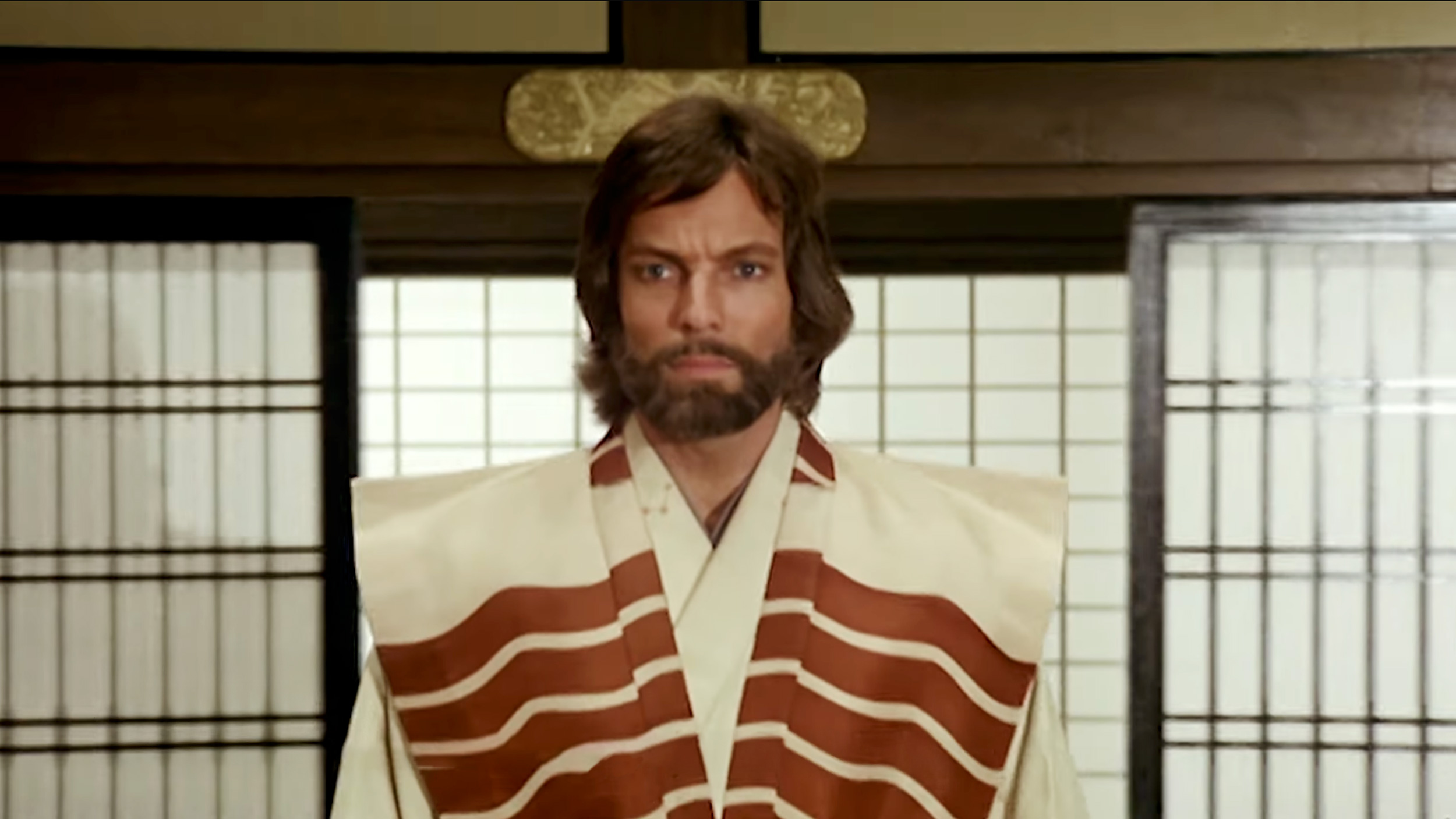
Four decades later, television viewing has certainly come a long way. Last year the 10 episodes of the remade Shogun miniseries were broadcast on FX, Hulu and the Disney Channel, including to subscribers in Japan.
Starring Hiroyuki Sanada, Anna Sawai, Tadanobu Asano and Cosmo Jarvis, Shogun 2.0 received wide acclaim, setting a new record as the most awarded single season of television in Emmy history. It additionally received four Golden Globe Awards, including Best Television Series, Drama.
Jarvis starred in the role of pilot major John Blackthorne, who was based on an actual historical personage, William Adams (1564–1620), the first Englishman to arrive in Japan.
Adams, who came to be known as Miura Anjin, was 35 years old at the time his Dutch ship out of Rotterdam, De Liefde, dropped anchor off the coast of Bungo in present-day Usuki City in Oita Prefecture, Kyushu, on April 19, 1600. The journey through the Straits of Magellan and across the Pacific had been extremely arduous, with only 24 of De Liefde's original crew of 110 surviving, of whom perhaps only half a dozen were still ambulatory.
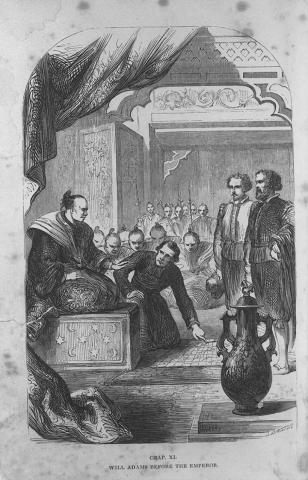
In October of the year Adams arrived in Kyushu, the struggle for control of Japan climaxed with Tokugawa Ieyasu's victory at the Battle of Sekigahara, in Mino Province (present-day Gifu Prefecture). According to historical accounts, 19 bronze cannons removed from Adams’s ship contributed to Ieyasu's victory.
Three years later Ieyasu was officially appointed shogun and Adams, accorded the title of hatamoto (retainer), went on to serve as a trade and diplomatic advisor. He also supervised the building of Japan's first western-style sailing ship. He died in 1620 at age 55 and was buried in Hirado, Nagasaki Prefecture.
Tokyo and environs boast a number of historical sites related to Adams and De Liefde, including several quite close to the FCCJ.
From May 1603, Adams was furnished with a residence located close to the new wooden bridge spanning the Nihombashi river. (The present steel bridge, with its European-style gargoyles, was completed in 1911.)
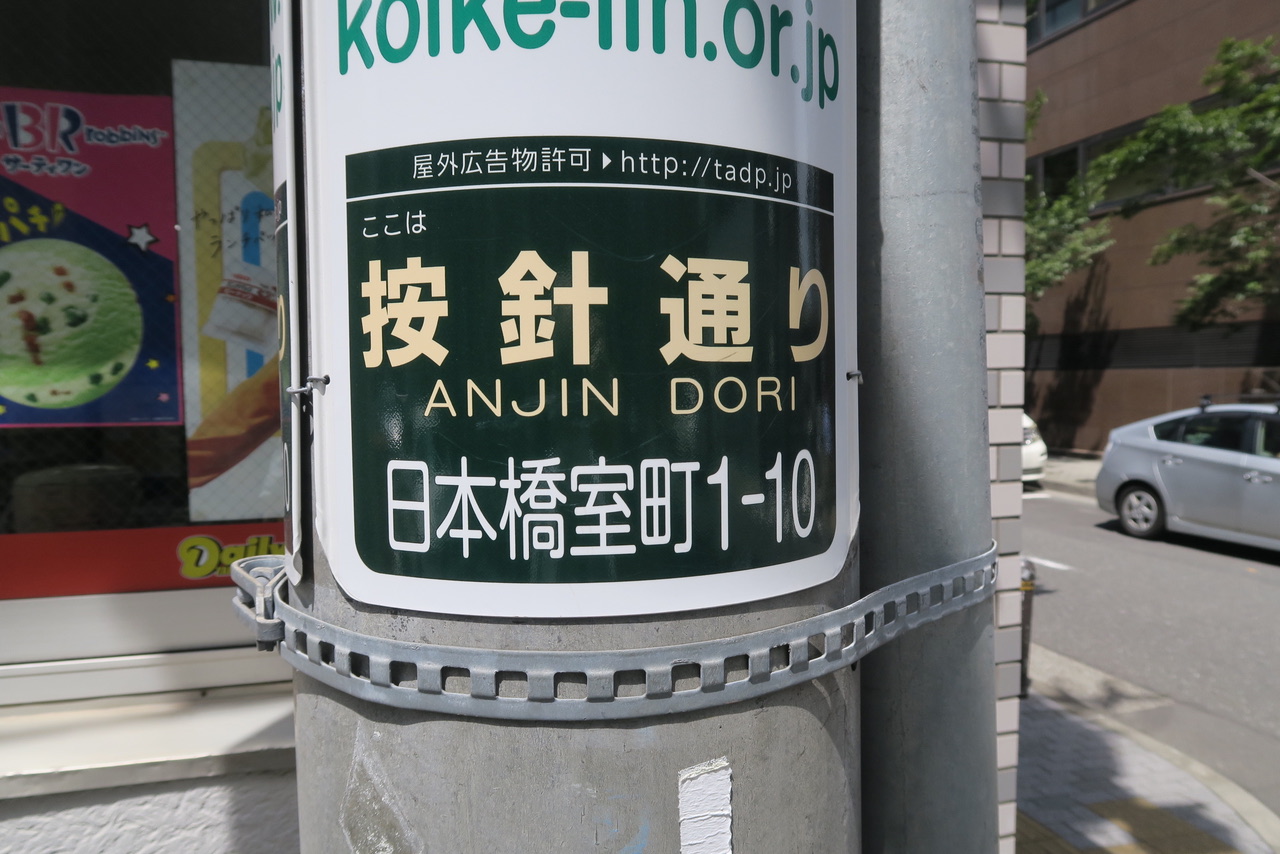
Anjin Dori (Pilot Street) is located directly across Chuo-dori from the entrance to the main branch of the Mitsukoshi department store. The street name is marked prominently in Roman letters on utility poles. About 60 meters from Chuo Dori, a bilingual stele, erected in 1951, marks the former site of Adams' residence at 1-10-8 Nihombashi Muromachi-cho. (It is indented into a space between two buildings, so walk slowly as it's easy to miss.)
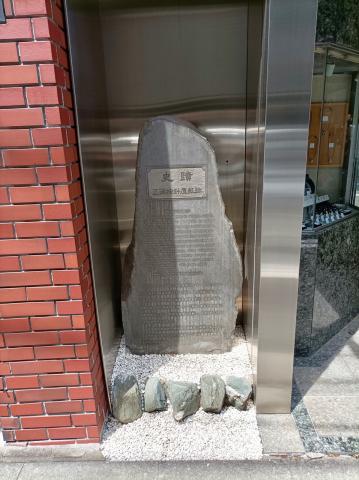
Beneath characters reading Miura Anjin Yashiki Ato (site of the Miura Anjin's Mansion), the English text reads: "In memory of William Adams, known as Miura Anjin, the first Englishman to settle in Japan, coming as pilot on board the Charity in 1600, who resided in a mansion built on this spot, who instructed Ieyasu, the first Tokugawa Shogun, on gunnery, geography, mathematics, etc., and constructed for him several ships on the European model, while rendering valuable services in foreign affairs and who married a Japanese lady, Miss Magome, and died on April 24, 1620 at the age of fifty-seven years. Rebuilt by some Japanese, May 1951."
The unsung Dutchman
The second mate aboard the Liefde, Jan Joosten van Lodensteyn (1556-1623), also played an important role in the early relations between Japan and the Netherlands. A native of Delft, Joosten learned to speak Japanese and, like Adams, was accorded hatamoto status. He eventually served as a diplomatic advisor and interpreter, making several trips to Batavia in the Dutch East Indies. When in Edo, Joosten resided with his family just outside the castle moat by the Wadakura gate, in an area occupied by Tokugawa loyalists and other important figures.
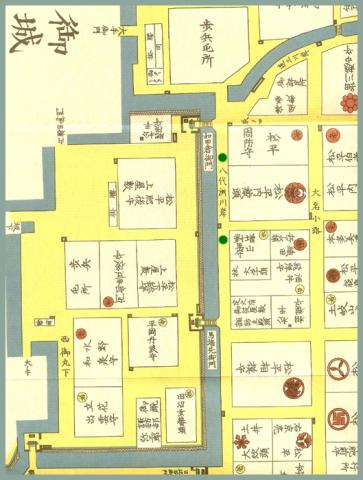
Joosten, like Adams, has been memorialized with a geographic name. Finding his name difficult to pronounce, Japanese shortened it to Yayōsu (耶楊子), which was later modified to Yayosu (八代洲) and eventually became corrupted to Yaesu (八重洲). From 1872 Yaesu was adopted as the name of the district to the east of the Sotobori (outer moat) and remains in use today.
In addition to the street, Yaesu-dori, bearing Joosten's Japanese name, the district features two memorials. One is situated on a traffic island at the west side of the intersection of Yaesu Dori and Chuo Dori. A bas-relief image of his face is flanked by two panels in the Dutch language. The second can be found in the sprawling Yaechika underground shopping complex adjacent to Tokyo station. To see it, go to the southeasternmost part of Tokyo station (Yaesu Minami-guchi) and take the descending steps to Yaechika. An explanatory bilingual panel with a map showing De Liefde's route across the Pacific and a bust of Joosten can be found not far from the steps, between a bakery and a noodle stand.
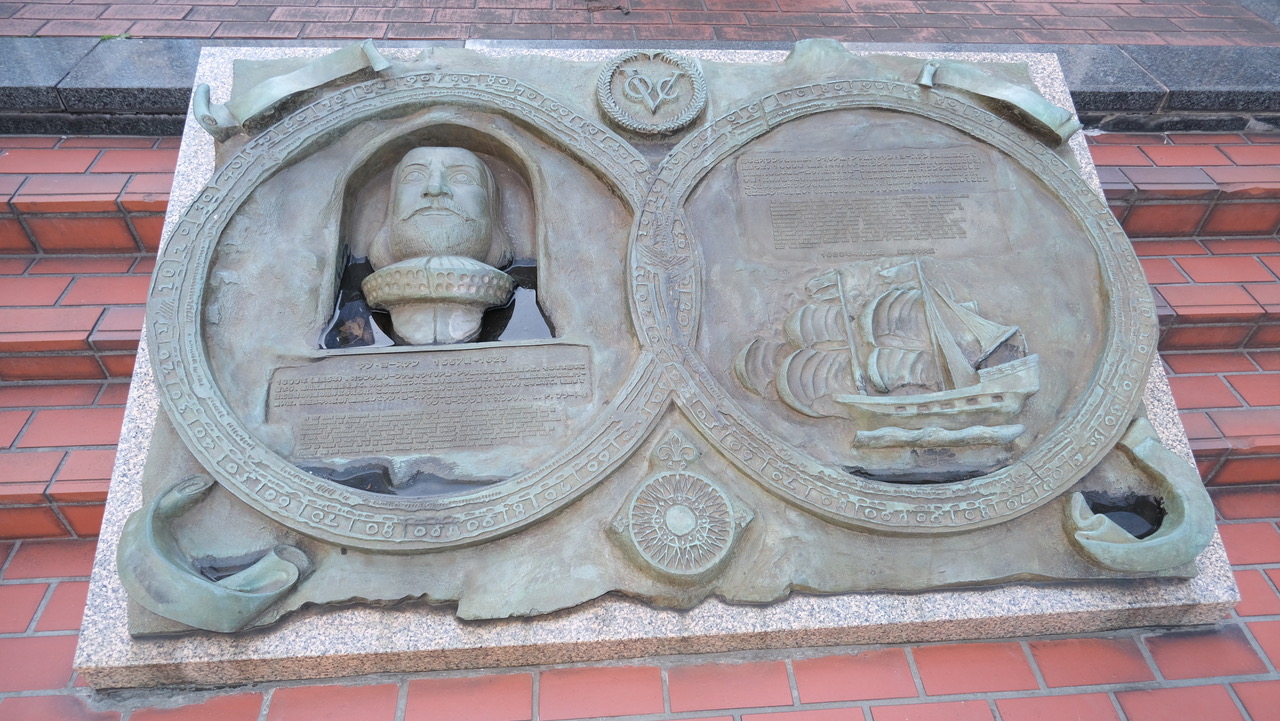
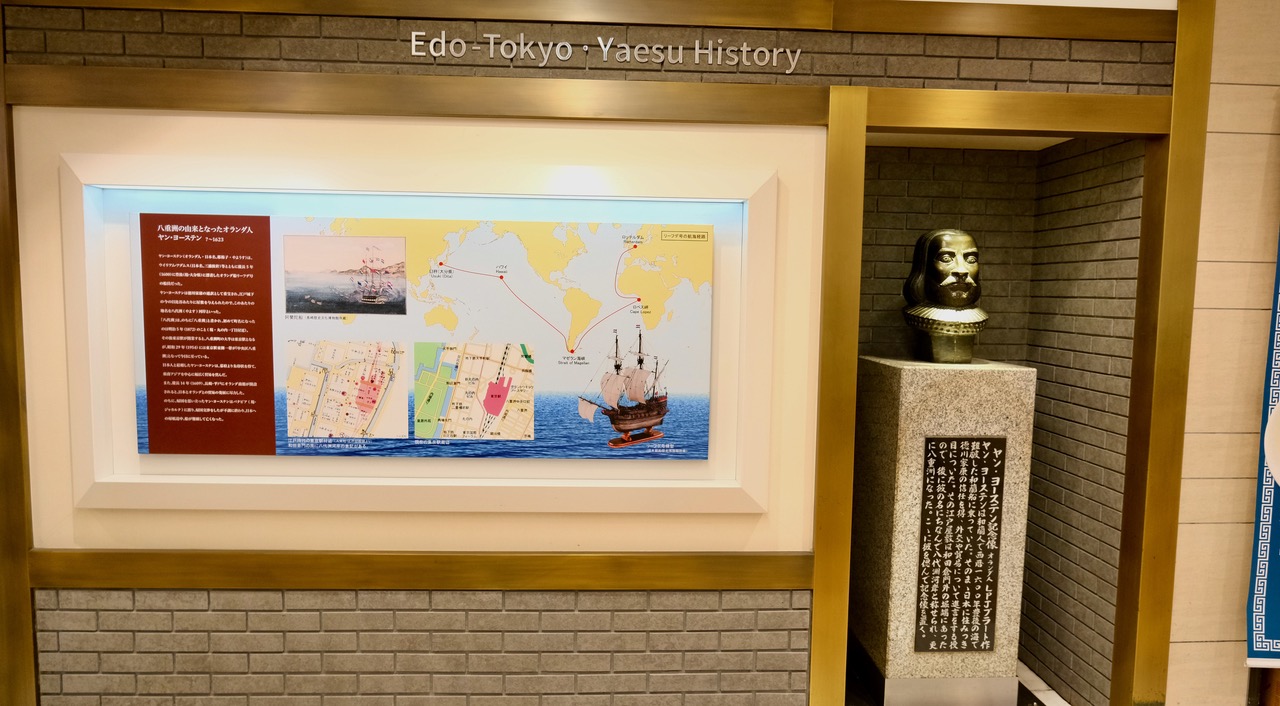
Statue of De Liefde
A statue of Adams' galleon, De Liefde, can be seen on the Marunouchi side of the Tokyo central station, beside the Maru Building. Leave the Marunouchi South exit and, with the Central Post Office on your left, cross the street. The statue, at Marunouchi 2-4-1, will be on your immediate right, between the underground parking ramp and a bicycle parking lot.
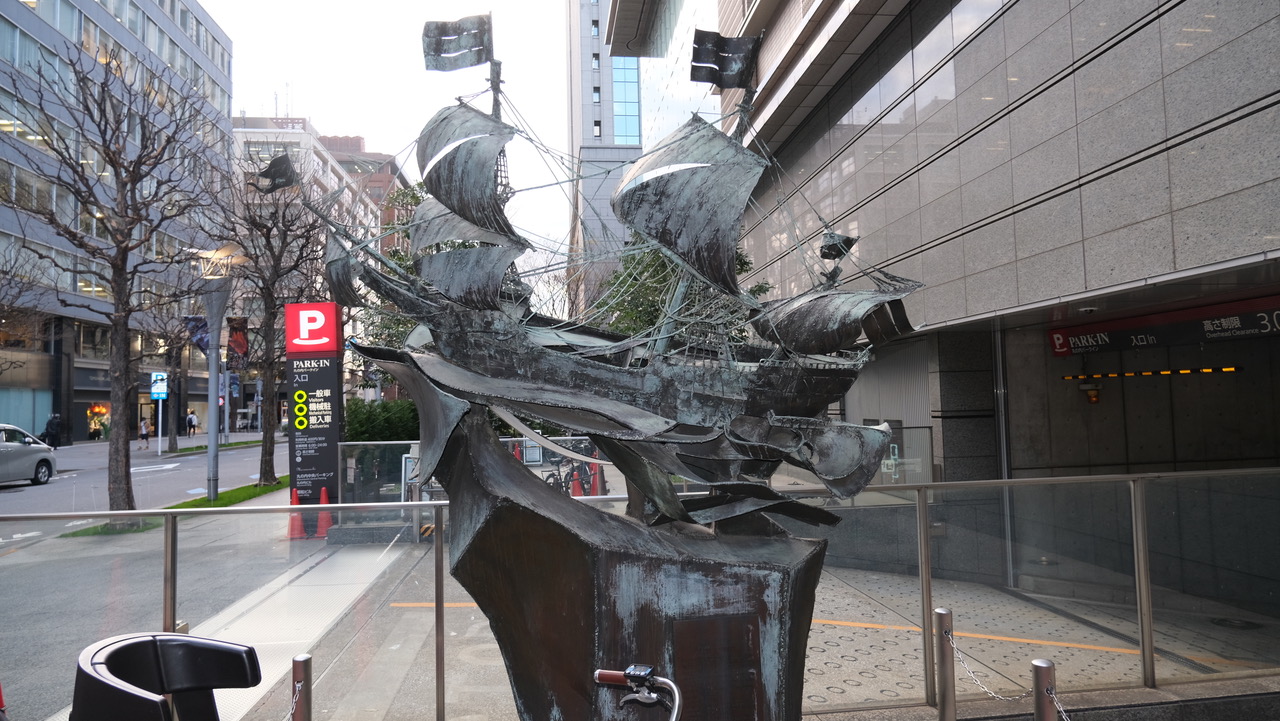
As a hatamoto, Adams received an annual stipend of 250 koku of rice (one koku = 4.96 bushels or 278.3 liters of rice). His domain was located at Hemi, a seaside village in present-day Yokosuka City.
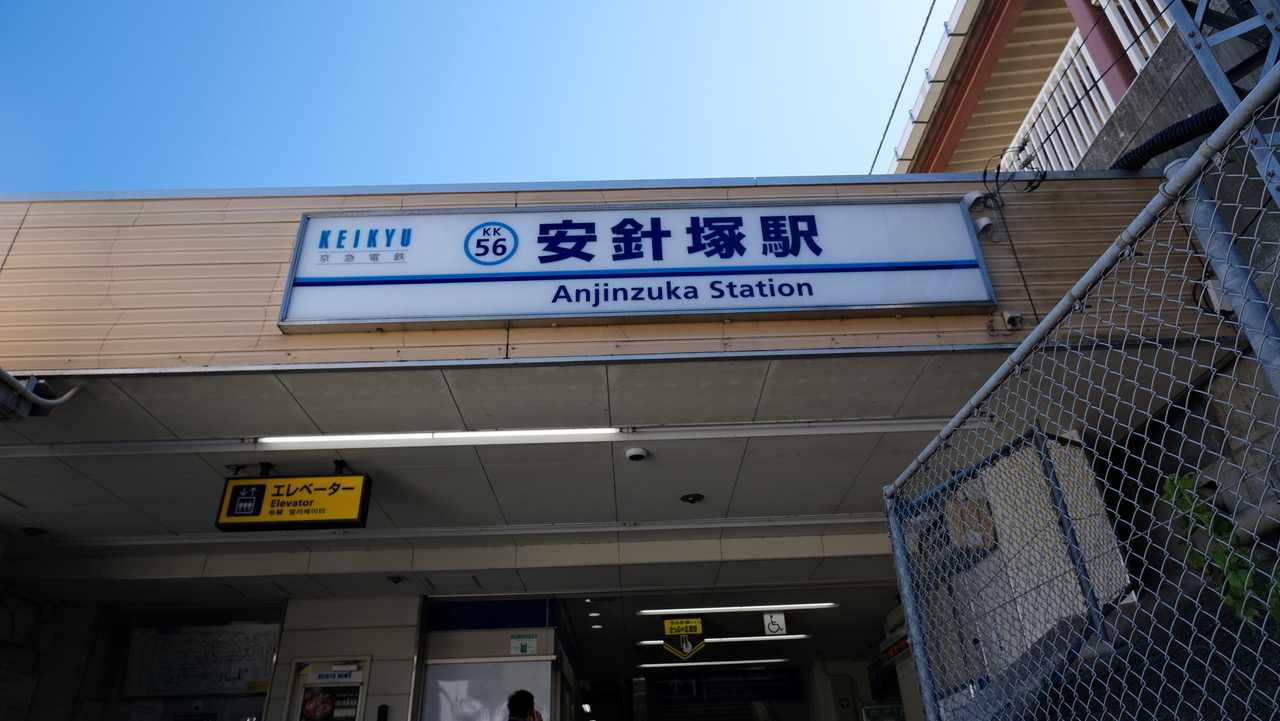
One local train stop from Hemi station on the Keikyu railway line is Anjinzuka (Anjin burial mound) station. The mound itself, designated a National Historic Site in 1923, is located at a high point in Tsukayama Park. If you want to visit, be prepared for a strenuous uphill climb. A Japanese signboard showing the route to the park is posted outside the station but the route is not well marked, so GPS guidance is advisable. Once you get to the top, which will take about half an hour, you'll enjoy clean air and a panoramic view. Two stone memorials behind a metal gate mark the graves of Adams, on the right, and his wife O-Yuki. The park maintains a rest house and vending machine dispensing chilled beverages.
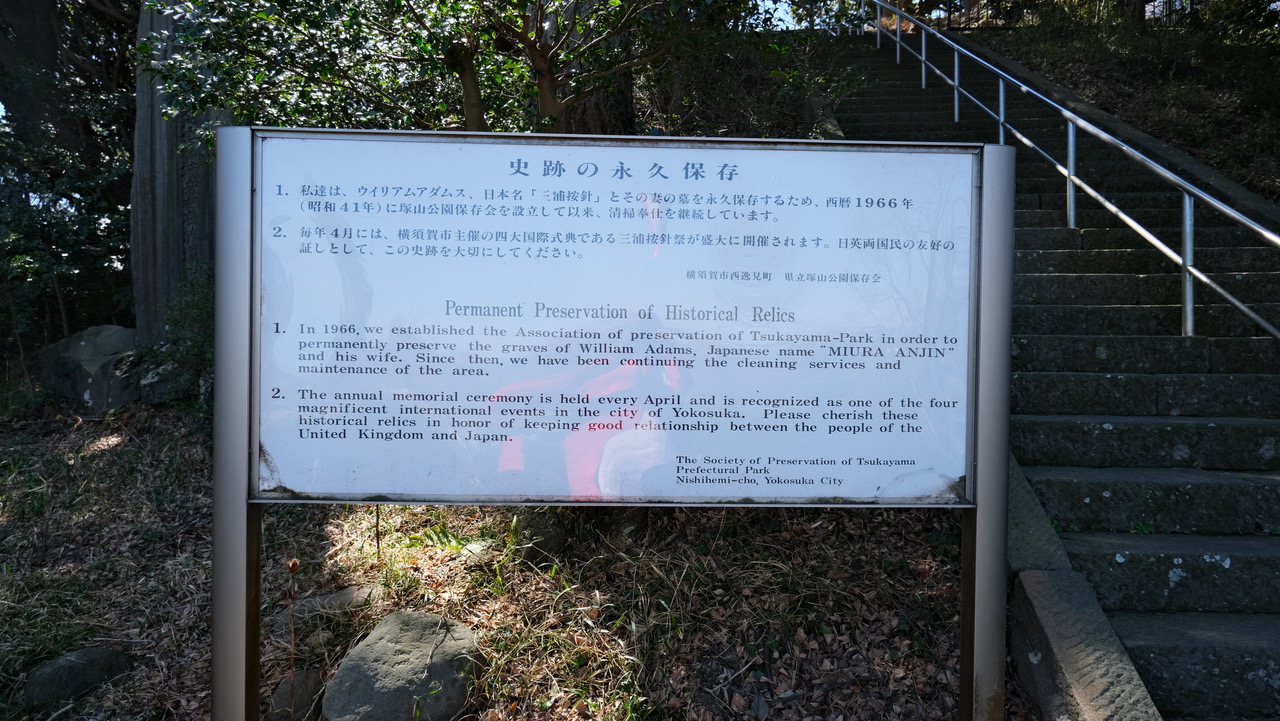
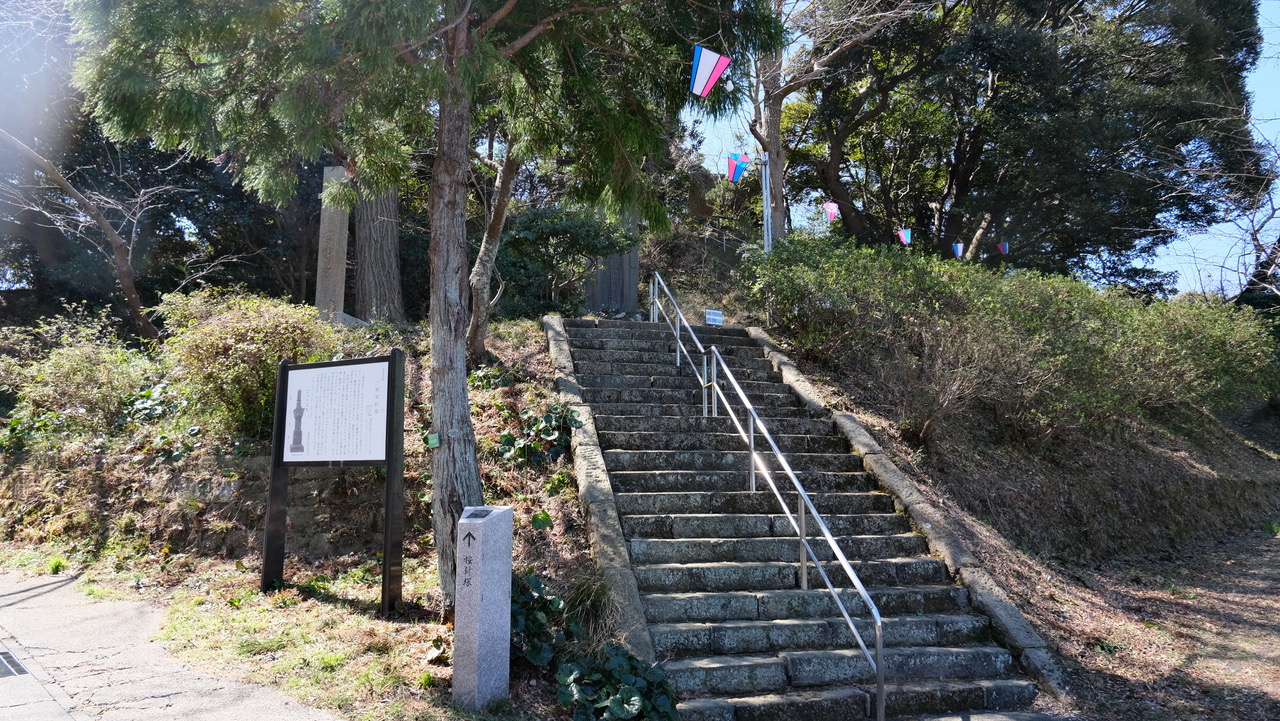
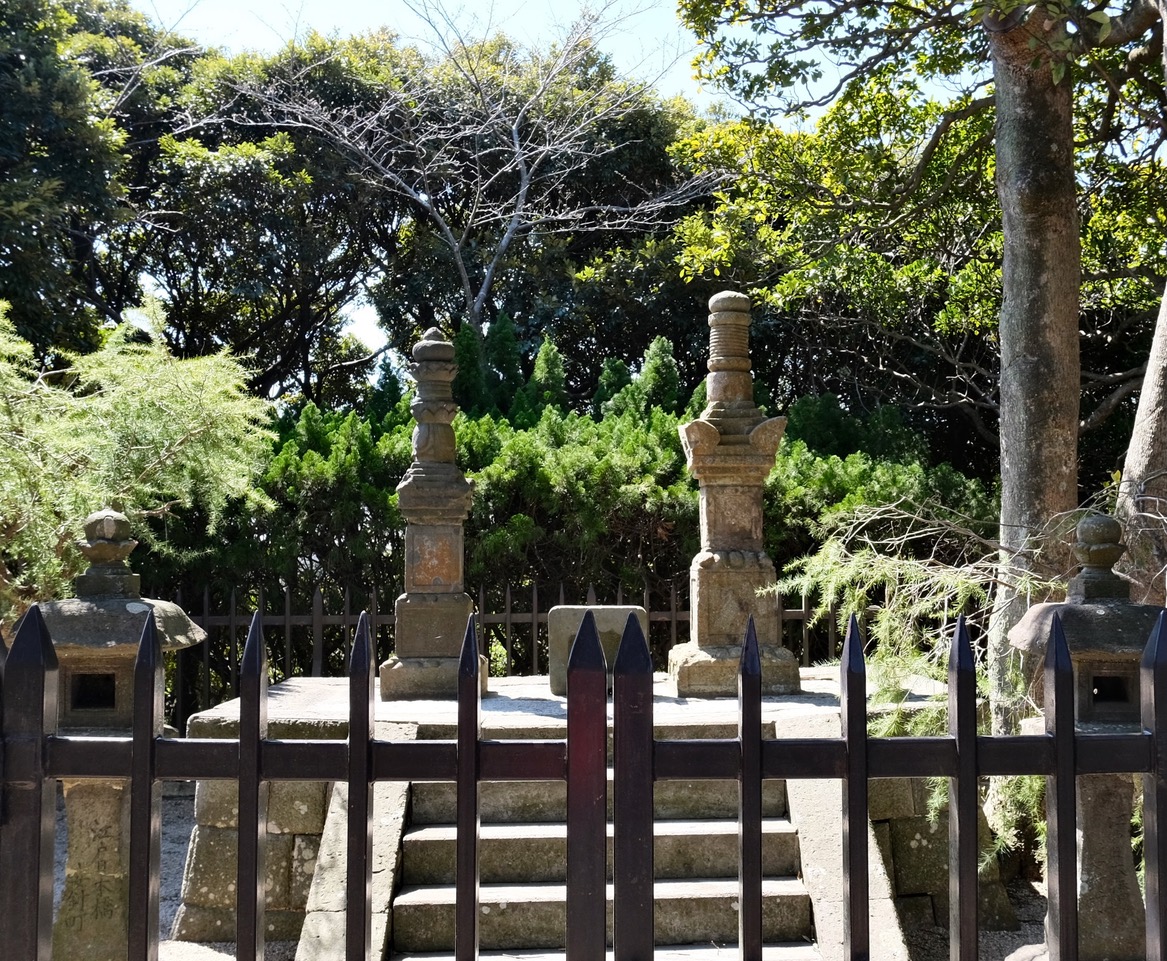
Since Adams died and was buried in Hirado in 1620, how does one explain a second grave in Yokosuka? In Japan it is not unusual for people to have more than one grave, a practice known as bunkotsu (literally, separation of remains).
The next stop from Anjinzuka on the Keikyu line traveling away from Tokyo is Hemi station. The Jodoji Temple, about four minutes' walk from the station, is entrusted with maintaining Adams' family grave, and is also repository for several artifacts related to Adams' presence in Hemi. The artifacts are not on public display but can be viewed on the temple's home page.
Jodoji holds an Anjin Festival each spring, and has also been campaigning, in cooperation with Yokosuka City, for NHK to produce a Taiga Drama – the hourlong historical drama broadcast every Sunday evening since 1963 – about Adams’s sojourn in Japan.
Before being christened De Liefde – meaning Charity or Love – Adams’s ship had originally been named Erasmus. Records are uncertain about what finally became of the ship. The only piece presently known to exist is its figurehead, a wooden carving of Dutch theologian and Enlightenment thinker Desiderius Erasmus (1466-1536), which had adorned not the ship's bow, but its stern. The figurehead stands 103cm in height, and holds a scroll reading ER(AS)MVS on the first line and R(OT)TE(RDA)M 1598 on the second line.
The figurehead wound up in the Ryukoin temple in Sano City, Tochigi Prefecture but its provenance was not authenticated until recognized as such by a Dutch historian. The figurehead was loaned out for a time to the Tokyo National Museum in Ueno, but in March 2022 an Erasmus Statue Museum was opened within Ryukoin Temple as a place to learn about the Erasmus statue.
In his efforts to track down the Erasmus figurehead, this writer has found it to be maddingly elusive. Before making a trip to Sano it would be a good idea to call Ryukoin temple to confirm its accessibility.
A full-size reproduction of Adams’ 330-ton Dutch galleon, with the figurehead of Erasmus on its bow, is anchored at the Huis ten Bosch theme park in Nagasaki.
Acknowledgement: The author, whose creaky legs gave out halfway up the mountain, thanks Dylan O’Brien for the photos of Tsukayama Park.
This year Mark Schreiber celebrates his 60th year in Asia. He is currently working on an essay about Japanese weekly magazines that will appear in an anthology about Japan's mass media.

